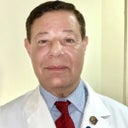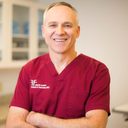Over fifteen years ago, I developed a minimally invasive technique for treating dermatochalasis, the fancy name for the excess skin that sags over the upper eyelid from some degree of brow ptosis. In my experience this technique has proven a very viable alternative to surgical blephs, especially in younger individuals without excessive excess skin.The technique is quite simple in experienced hands and literally takes about five minutes per side to complete. The "underbelly" of the excess skin (the part hidden from view) is first anesthetized with local anesthetic--making the procedure painless. Next, the focal areas to be treated are marked in a discontinuous fashion--not in a continous line-like fashion. Finally, a simple cautery is then used to treat these focal areasAlmost immediately, the skin contracts vigorously in response to the probe, drawing the hooded portion of the lid backwards and upwards over the surface of the underlying normal lid. As it does so, the underlying eyelid is exposed and restored. Each wound is then covered with only a small amount of antibiotic ointment and left to heal spontaneously. The discontinuous, focal, nature of the little wounds typically leaves barely visible marks when completely healed--very much like when a dermatologist removes keratoses or skin tags from the upper lids in this fashion.Healing is usually complete in seven to ten days. Slight bruising and mild swelling are common afterward and may take about a week before becoming less noticeable. Cold compresses can be used in the first 48 hours to minimize the bruising and swelling. This may be supplemented by the oral use of bromelain for three days. Bromelain, an enzyme, is a pineapple derivative that has demonstrated usefulness in preventing bruises and speeding their resolution. Pain medications are seldom necessary, but for some people who experience mild discomfort, acetaminophen (Tylenol) is ordinarily adequate. Most people can return to work the following day. I performed the procedure on myself a number of years ago standing in front of a mirror and hours later took a twelve hour transatlantic flight.One treatment is ordinarily all that is required. The results are permanent and can be fully appreciated in just two weeks. When completely healed, faint, narrow, linear ivory or off-white lines are often all that can be seen at the treatment site, which are not visible when the eyes are open.




